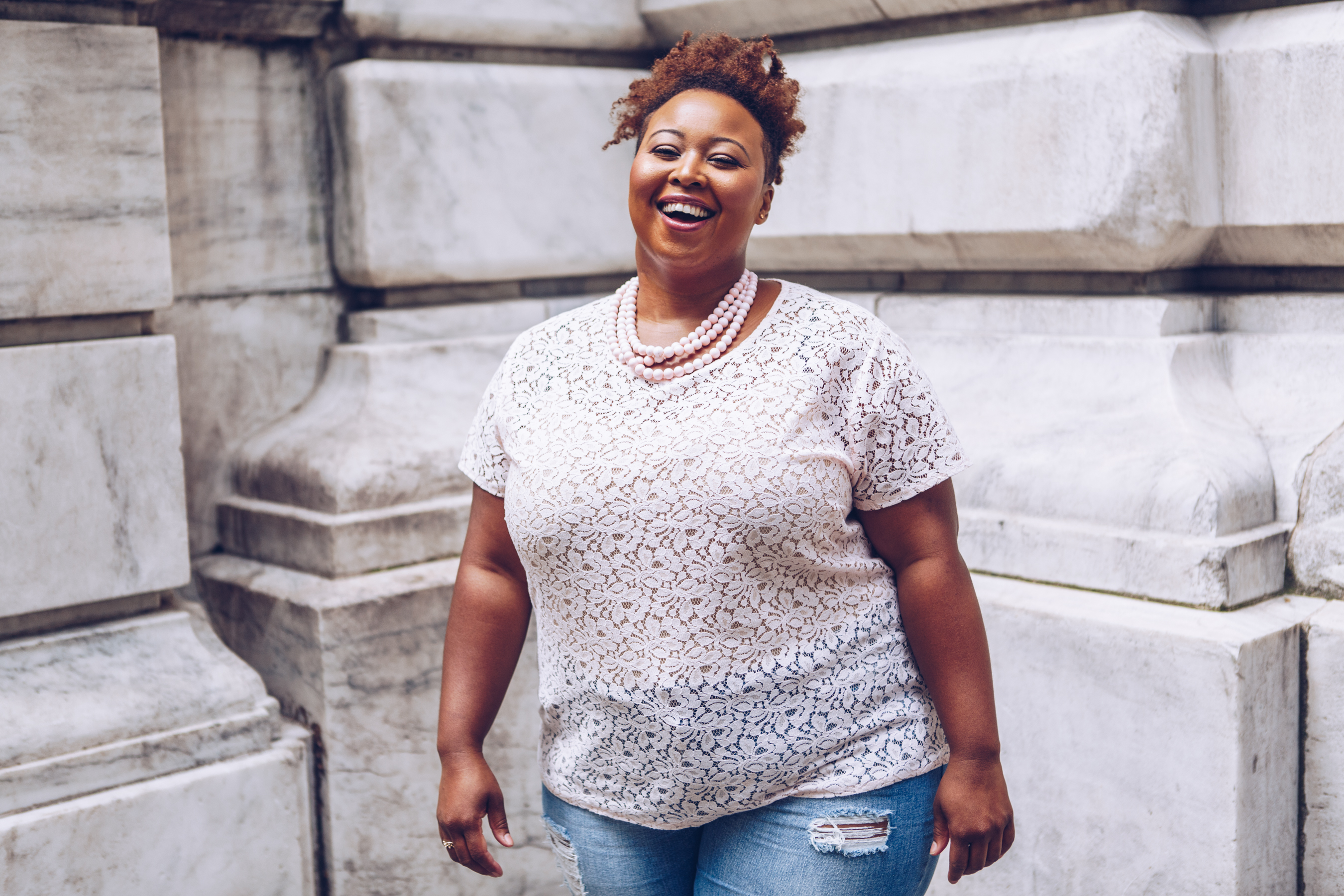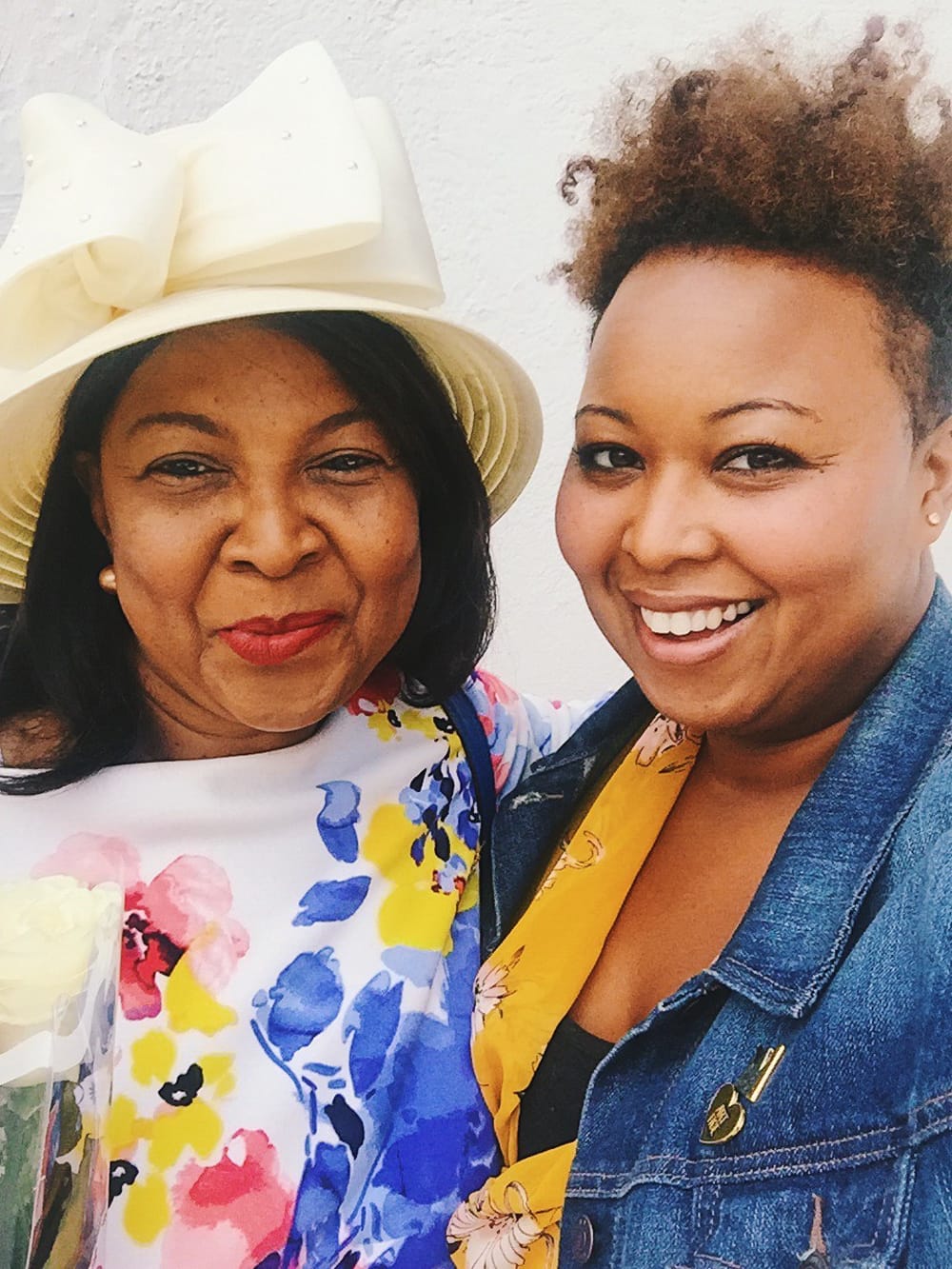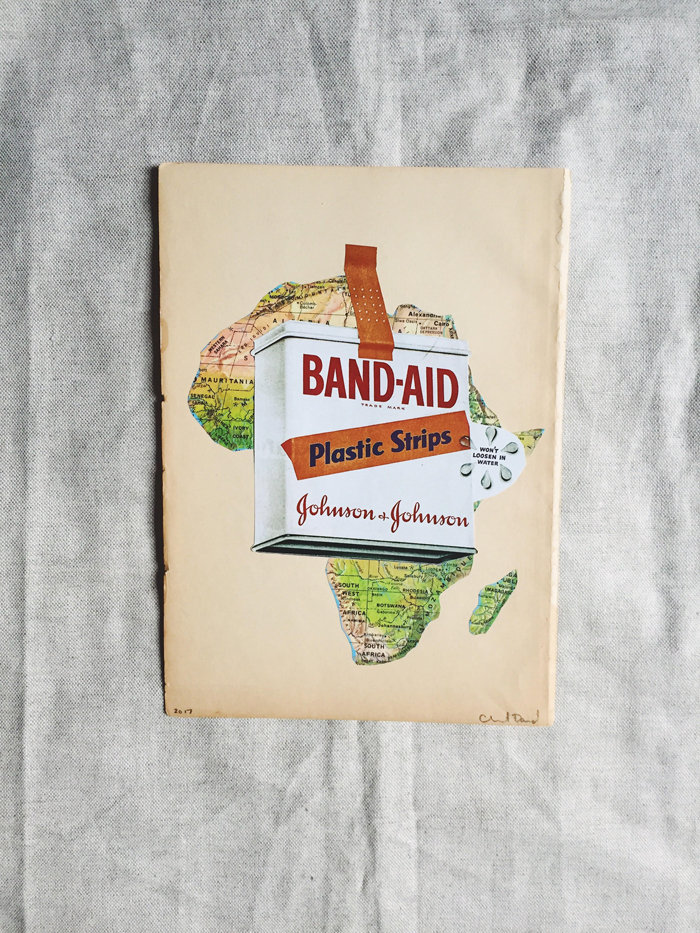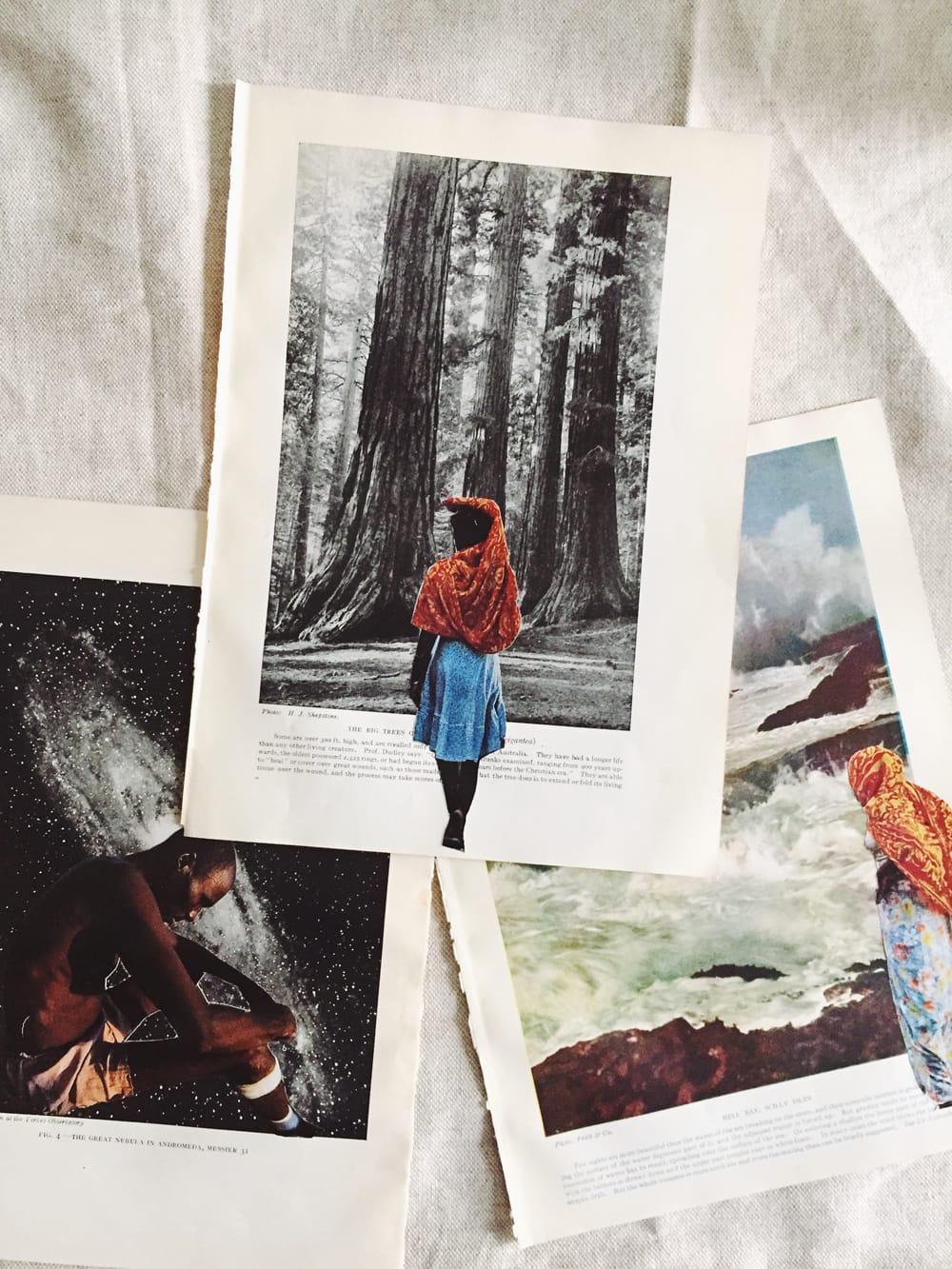Where did you grow up? I was born in South Carolina and we moved to Harlem when I was five. Most of my life I’ve lived in Harlem, a neighborhood that has quite a bit of historical significance. I spent most of my time growing up there. I left Harlem when I was 32 or 33 to move to the suburbs, and then when I tried to move back to Harlem I was priced out because of gentrification. Sadly a lot of natives are being pushed out because rents are really high. I grew up mostly in Harlem and I went to school in Harlem, until high school.
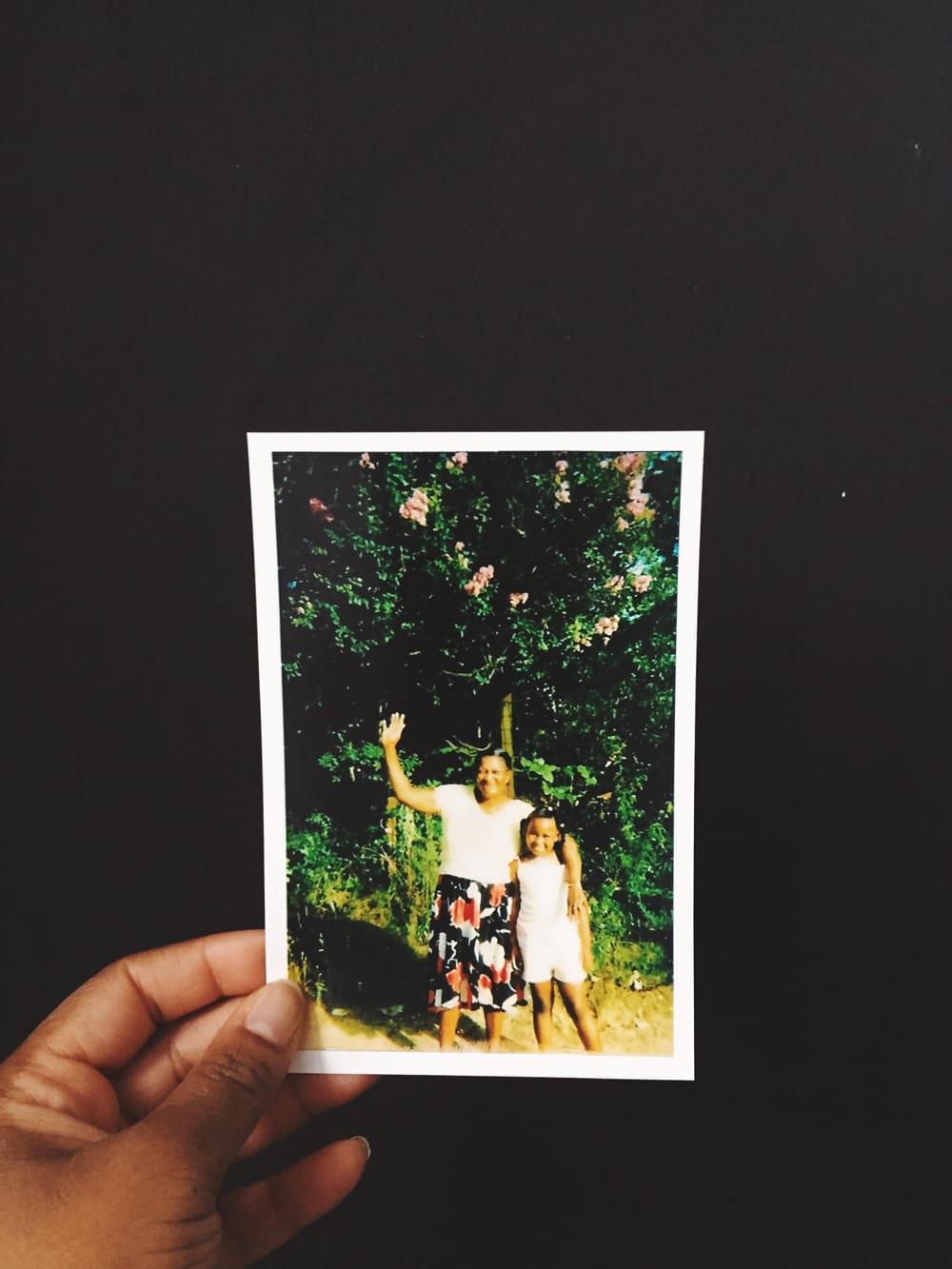
Where did you go to school? I went to Laguardia High School of Music & Art and the Performing Arts, which most people know as the “Fame” school. When I went to school there, the two schools had already merged and it was right across the street from Lincoln Center, right in the performance hub of the city. I spent four years there studying art.
The way our school was set up, we spent more time doing art than anything else, but we had longer days than most students. We got all of our core academics, but we would spend at least five or six periods in our major. We had classes in everything from watercolor, oils, acrylics, sculpture, ceramics, photography. The whole point was to give us a flavor of a variety of art media, until junior or senior year when you specialize. My junior year I started to specialize in oils, and I spent most of my time painting. Then I went off to college and I just stopped painting because it just didn’t seem realistic.
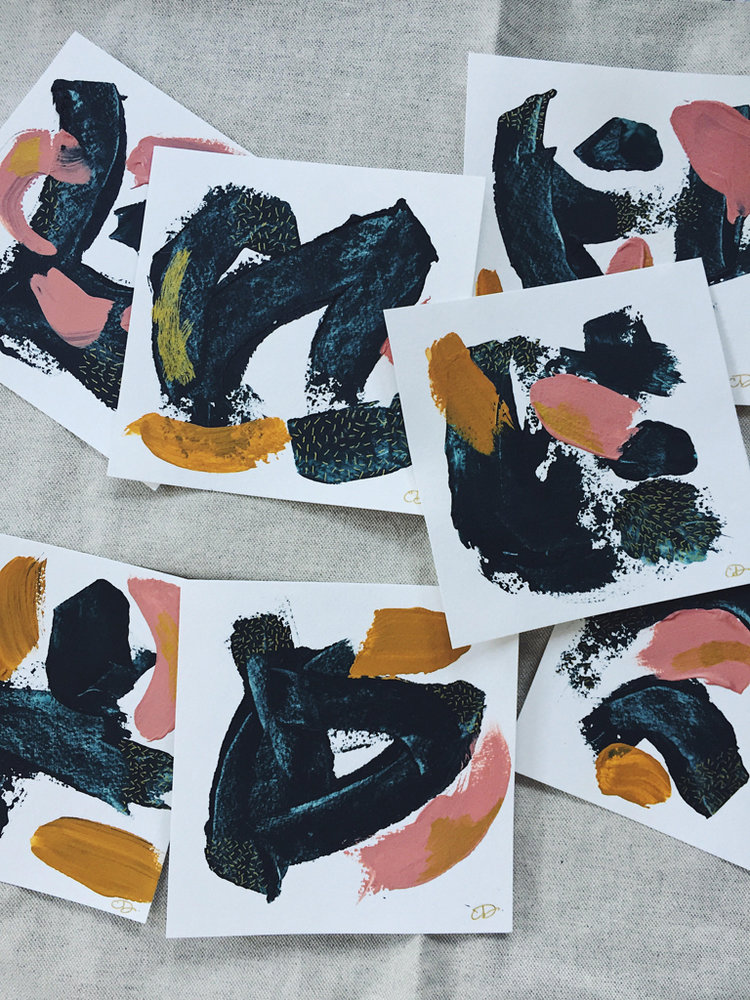
I also had my daughter when I was in high school, which put a whole lot of other demands on my time. When I was heading off to college I needed to be very practical because I had a considerable amount of responsibility, being a teenage mother. I didn’t have time to make art; it seemed frivolous. That, and I didn’t see a lot of examples of artists doing their work full time, thriving in their art practice.
I ended up majoring in pre-med and African American studies. The goal was to go to medical school right after college, but I ended up being a public health researcher instead and had a long, dedicated career doing that. All the while I still wanted to make art but I couldn’t see it as a viable thing. I had a lot of family responsibilities, and a whole lot was riding on me. Being the first one in my family to graduate college and graduate school, there was a lot at stake, so to think about making art and not making an actual living wasn’t an option.
It’s pretty remarkable that you had the support that you needed to get through having a child in high school, and then were able to go to college and graduate school and further your education. What kind of support did you have as a teenage mother? When I got pregnant, it was completely and totally unexpected. I didn’t even know what was really going on. Dropping out was never an option. That was never a conversation that my mom was going to have with me. It was non-negotiable. Instead, we had to figure out how to not have my studies interrupted.
At the time, I was in a college-bound program, which is basically an after school program where students get a lot of support with their academics, making sure they’re on target to be able to apply to college. In the case of my college-bound program, the focus was on getting into one of the top 50 schools in the nation. It was a rigorous program called Legal Outreach, Inc., and it’s still in existence, helping lots of teenagers from low income families cast a wider vision for their academic achievement.
“When I got pregnant, it was completely and totally unexpected. I didn’t even know what was really going on. Dropping out was never an option. That was never a conversation that my mom was going to have with me. It was non-negotiable. Instead, we had to figure out how to not have my studies interrupted.”
I was going to an after school program Monday through Thursday, and taking Saturday classes while I was in high school. When I found out I was pregnant, my counselors were there to make sure I could maintain the requirements to be in the program. They were extremely supportive. They brought my work to my house so I wouldn’t fall behind in my Saturday writing classes. Eventually they employed me, because they knew I needed to get a part-time job because I had responsibilities. I had really good grades, so I didn’t have to go the tutoring services that they provided. They hired me as a tutor, which paid a small stipend to help with buying things for my daughter.
It was really the support of that program, and the support of my mother, that just kept things from interfering with my school. I could go to school, keep my grades up, apply to college, and actually get in. I think things would have been drastically different had I not had the support from the folks at the college-bound program. If I had only relied on college counseling from my high school, I think I would have ended up in a completely different place than where I ultimately landed. The folks at the college-bound program saw my potential, and they didn’t want this traumatic event to derail my entire life. They were willing to go out of their way to make sure that I stayed connected and stayed in the community, and stayed positive through the whole thing. It was a pretty traumatic and depressing situation at times. The support of my counselors and my mother was so beneficial when it came to caring for my baby during that time.
It’s incredible that there are people out there willing to dedicate so much to helping somebody in a situation like yours, and that they were able to allow you to see your life through and not let this unexpected event ruin your life. I think that’s the good thing about this particular college-bound program. They were very clear on the types of things that were potential detractors from students like me. They were well skilled in knowing that there are lots of things that will come up when you’re servicing kids from this type of community. They deal with the financial insecurity of the families, maybe the food insecurity of the families. There’s violence in the community. They knew all of these things and they know the kinds of students that they bring into the program.
They’re still doing this work 25, 30 years later. They’re committed to the communities that I grew up in, students with all sorts of issues. I am very grateful and forever indebted to Legal Outreach for just being an incredible resource. I wanted to give back, so I ended up working for them full-time for almost two years. I had to pay it forward.
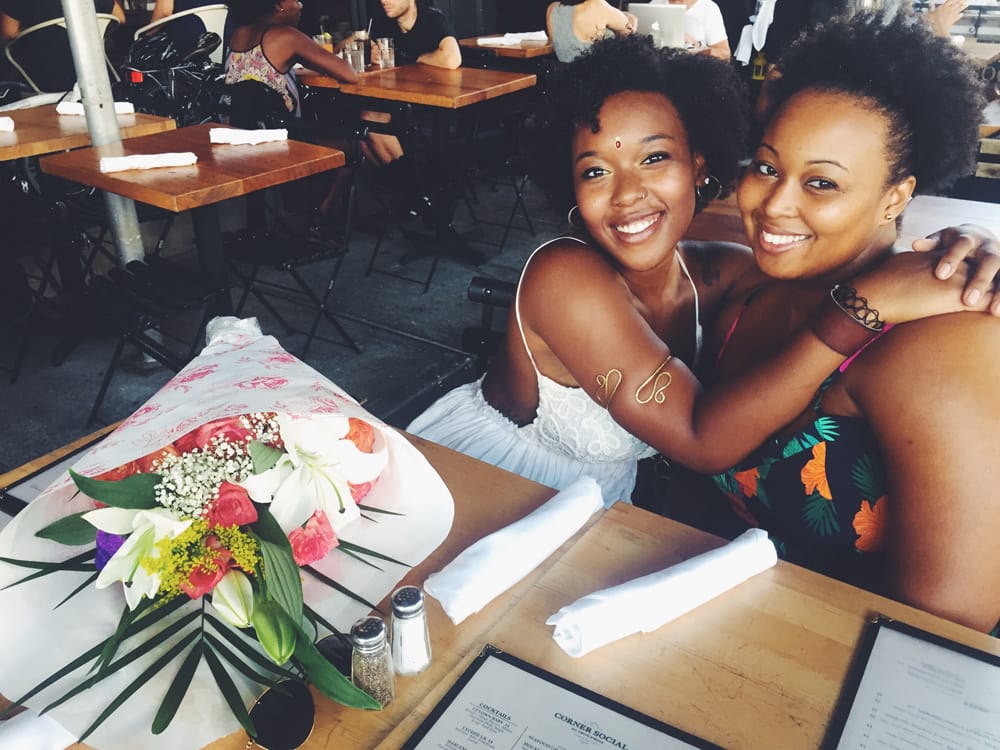
How old is your daughter now? She is going to be 23 next Monday! She just moved out of the house last week. She is on her own.
What does your daughter do? She’s what some might consider to be a classic millennial; she’s finding her way. She’s creatively inclined and she does graphic design work, some photography work, video. Her goal is to be a travel blogger. She’s adventurous, and she keeps a YouTube channel, and writes about that. She figured out early on that she doesn’t want to do the nine-to-five city worker thing, and I’m actually very okay with this. I’m glad she figured it out sooner than later. So I told her that’s fine, as long as she’s staying healthy, and taking care of herself.
She was living at home longer than I wanted her to be, and it got to a point where I told her she could do this wacky creative thing, but I wanted her to be independent. I told her it’s not a good thing for her to stay home, where she has everything at her disposal. I told her, “I really want you to know what it feels like to be on your own and take care of yourself. Make sure that you have basic skills of cooking, going grocery shopping, paying your bills.” She finally heard me and she moved out last week with a roommate.
I told her, “The worst case scenario is you run out of money and have to come back home. But at least you would have tried to make it on your own.” I’m very proud of her. She went to community college and lived at home, so this is her first time being away. And I’m happy that she knows that the whole nine-to-five traditional job isn’t for her, because I think a lot of us go into it because there’s an expectation that we have to do something, and it ends up sucking the life out of us. I would like to see her figure out how she’s going to be her fully expressed self sooner rather than later.
So is that what your story is? That you got the life sucked out of you? Not really. I still have a very good public health research career. I was able to work with a lot of great people, working for causes that I really care about. Public health is inherently focused on social justice, and I spent a lot of time doing health equity research, and working with a lot of smart people to make some incredible things happen in some of the areas in New York City that need the most help.
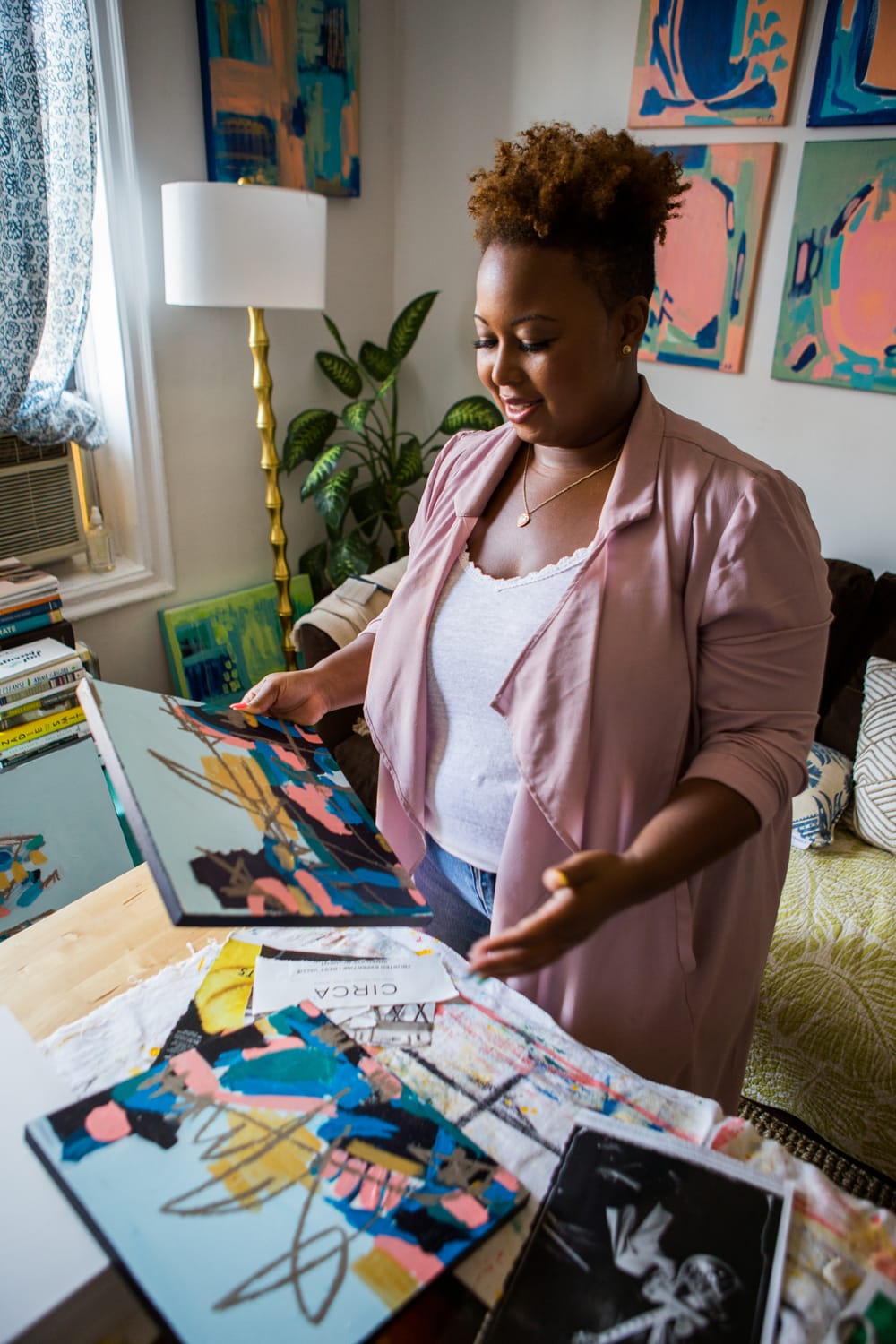
When did you decide to transition from your nine-to-five job into an art career? About six years ago I had reengaged my art practice, painting after work and on the weekends. In the last two or three years, it got so painful because I wanted to spend more time making art than doing what I was doing. At that point I had reached a level of seniority at my work where I wasn’t actually even doing that much research; I was just supervising a lot of researchers. I was doing administrative work, in meetings seven hours a day. I would get to work and feel like I wanted to cry because I wouldn’t want to be in a seven hour meeting talking about things that I didn’t think were as important.
The research, the actual work, was very important. It’s just that when you get to a certain level it’s all pushing paper and attending meetings. I didn’t like that. It got so painful and knew I needed to switch the ratio. I wanted to spend most of my time making art and trying to figure out a model. There’s no one way to be a thriving artist, so I had to figure out what would work for me, and how I can take all of my creativity and make my own way.
I’m still figuring that out. It’s been a year now, and it’s been rocky, but I’m learning a lot. I’m learning that there are a lot of skills that I can take from my previous career and translate them into my art practice, and my art business. I’m equally creative and analytical. I live by the spreadsheet or the checklist, but at the same time I’m very creative. Now I can sit down and look at my art business and make goals. I can be mindful of how much money I’m spending on supplies, or how much money I’m making. I can work on a public relations plan. The business part of it is very methodical, and my skills from my previous job helped me sort of move things along.
What inspires you, and what is your work about right now? I was just watching this video of the actor Jim Carrey—who is also a painter now—called I Need Color. He talks about how your vocation chooses you, and how painting chose him. I feel the same way about my subject matter. I care about what I care about, and I’ve always cared about matters of justice, and about telling stories. I don’t make art that necessarily solves any problems, but I do like just putting things out on the table for people to consider. I have five practices as an artist, and I rotate through all of them.
There’s a painting practice, mainly acrylic, although I’m doing more oil work now. There’s the collage practice. There’s an ongoing photographic practice, film and Polaroid. Then there’s a writing practice. And there’s a research practice, which undergirds all of the work.
In my collage practice, I tend to work with themes of social justice, self identity, politics. I’m always curious: How did we get here? How did we get ourselves into this situation? What is the root cause of this particular inequity? When did it start? Who are the players? Who is the victim? I’m constantly thinking about how to get to a place of solutions. I’m not trying to offer any solution. I think that you need to unearth the story and unearth the origin. I like collage for that reason because I can pull from present day and historical materials and fuse them together to say: “Hey, we should probably think about this.”
One recent collage that comes to mind is an image of the continent of Africa, with a BAND AIDⓇ box on top of it. It’s provocative, and you can think a lot of things about it. The title of the piece is After the Scramble. In historical terms, there was this “scramble” by all of these European countries to divide up Africa, and to colonize the continent. And then I wonder how this continent so rich in so many things is in the state that it’s in. There are a lot of historical processes that go into that. I don’t have any solutions, but I am curious about current processes and the origins of those. I do think that we’re all sort of implicit in what we have now, and we’re all part of the solution. We have to reckon with what’s present, in hopes of making it better for ourselves, and for our kids going forward. Those are things that I think about all the time in my collage work.
My painting practice is completely different. I will sum it up this way: my painting practice deals with how I feel, and my collage practice deals with how I think. So when I’m painting, most of my painting is abstract expressionist painting. I’m not necessarily approaching the canvas with any sort of story in mind. I just feel my way through it. It’s always an emotional experience when I’m painting, to the point that it frustrates me, it makes me cry, it makes me deliriously happy.
“My painting practice deals with how I feel, and my collage practice deals with how I think.”
That’s interesting to me—I feel emotional when I look at your collage work. I think it’s really brilliant work, the way you place just two images on one another to evoke an idea. That’s so beautiful. That makes me happy! I love graphic design, the way things are placed on a page, so my collages are very simplistic in that sense. I try to spend a lot of time thinking about the composition. It takes me days, sometimes weeks before I paste something down. I literally have to leave it there. Leave it on the table, walk past it a few days, and then if it still gives me that jolt when I see it or glance at it, then I decide it’s time to glue.
When did you officially quit your job? I quit my job completely in September of 2016. I spent the first six or seven months just working on my art, living off of my savings. But then, I picked up some public health research clients a few months ago. These are very small, short contracts, no more than ten hours a week. I’ll probably continue to do that because it brings in some money as I continue to build my collector base.
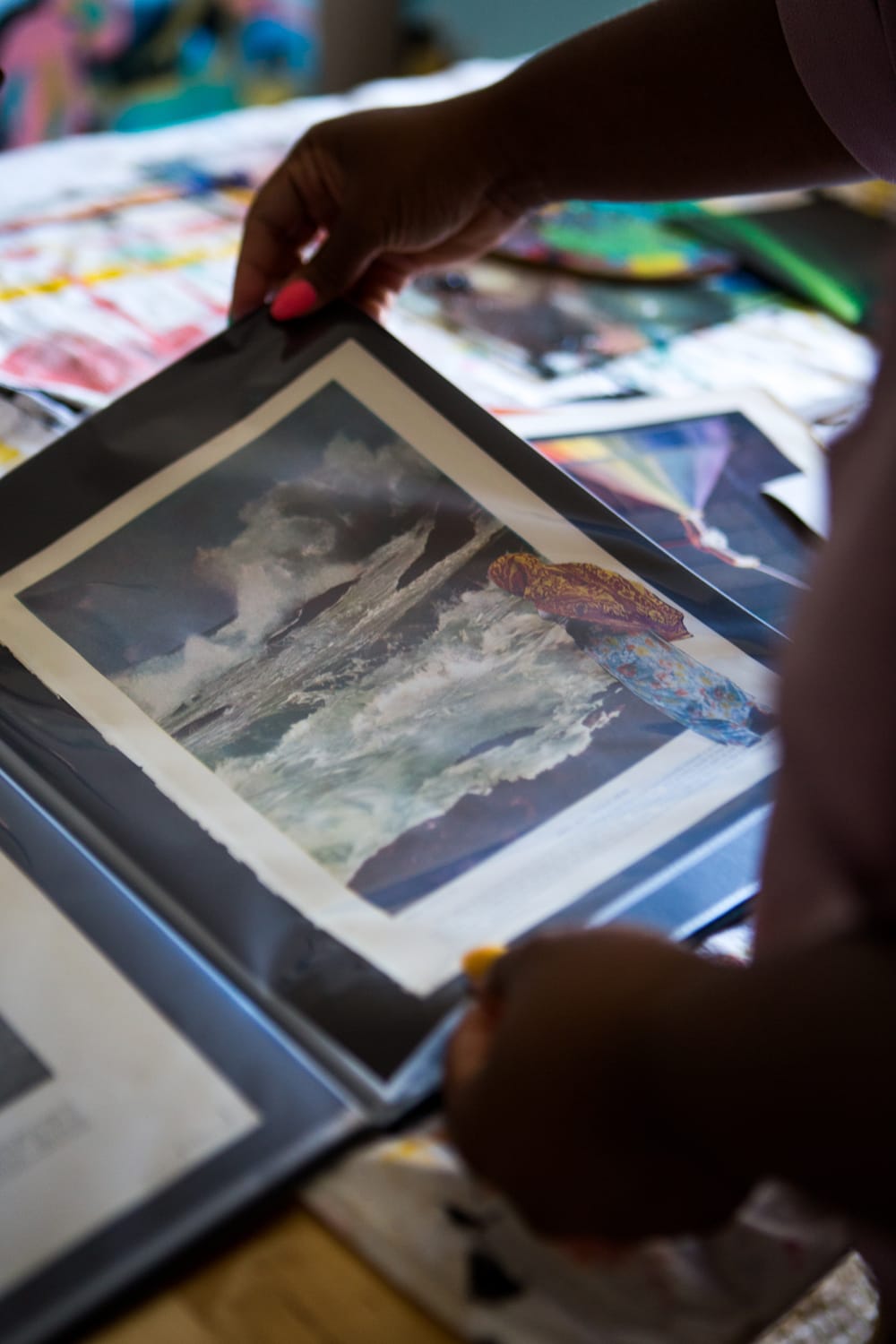
Were your employers supportive of your transition to art? Yes. When I told my boss I was going to quit, she told me she had sensed that it was time. I was having some other issues at work, and my division was growing really rapidly. I gave a five week notice, because I am in a senior position and I am responsible for a lot of people and projects. I wanted it to be a smooth transition for everybody.
People have been, and still are, really supportive. I am friends with a lot of my former colleagues, and people are helping me spread the word about my work, even buying my work. Everybody knew it was going to happen. Everybody knew about my art practice and I was sharing it with people because I believe that art is therapy. I would bring all these art supplies in and every Friday we would make art. I did that for months before I left.
Right before I quit my job, I was feeling really burnt out. I went to my boss and told her I needed a vacation, and I needed it to be long. I requested a month off. No one would ever grant you a month of vacation, but my boss respected me and she knew I was valuable to the team. She also knew I was at my wit’s end. I spent more than half of that month in Santorini, just staring out at the sea. And when I came back, everyone was so surprised. They all thought I was going to call in and say that I quit. Of course three weeks after that, I gave my notice.
My advice, for anyone considering this path, is to be honest with your job about what is going on with you. Doing things in secret is never good. I’m just grateful that my colleagues were so supportive.
Congratulations on taking that step! Thank you. We’ll see. I try to be very transparent with my followers on social media, because I don’t want people out there just quitting their jobs. That’s not responsible. My daughter is an adult. If I had babies at home, I would still be at work. I would never, ever put my family at risk. You have to know your own situation, and what you can tolerate.
At this point in my life I am only responsible for me. I’m not married, and I don’t have any other children. If this doesn’t work out, it’s fairly easy for me to go get another job, rather than put my financial security at risk. Most days I do want to have more children, and I talk about that with my partner. In the event that I do have more kids in a couple years, I want to fully experience this time of going after my art with all of my attention, without regret. At the same time, I want to already have the momentum, so that if I do have little ones running around I’ve been in the game for awhile.
Becoming a mother so young, did you even have a chance to get to know yourself? Not at all. It was completely about my daughter, Nikierra. I didn’t have time to do certain things. I was always working two or three jobs. I never took time to take art classes outside of graduate school. I was also a workaholic, working 12 to 14 hour days for years. Now, I’m taking ceramics classes, I’m taking swimming. I’m learning what it’s like to have balance. I’m enjoying this time because I don’t know how long it is going to last.
When you tell your story, it seems like it’s in very clear chapters, so far. The chapter of childhood. The chapter of struggle and becoming a teen mother. And now this new chapter of finding out who you are again. Well I’m glad that I’m making it look nice and neat, because it wasn’t like that at all! It has been very messy and very challenging. But I’ve still had to go on. I still had to work, and my daughter’s teenage years were very tough.
I’m grateful for my level of optimism about everything. I can only be down for so long. I also have the ability to compartmentalize. I can have all hell breaking loose over here, and continue to focus on my work over there. I’ve had to do these things even though things have been crazy, because I am the sole provider. I had to do that from a very young age. Even when I was 15, up all night with my cranky baby, I still had to get to school by 7:55, and do my work. There was always a plan.
I was trained so early to be in that kind of mindset. Sometimes it does backfire because I don’t allow myself enough time to sort of break down and experience the emotion. I’m teaching myself how to do that now, because I do think it’s healthy to take the difficult moments and sit in them.
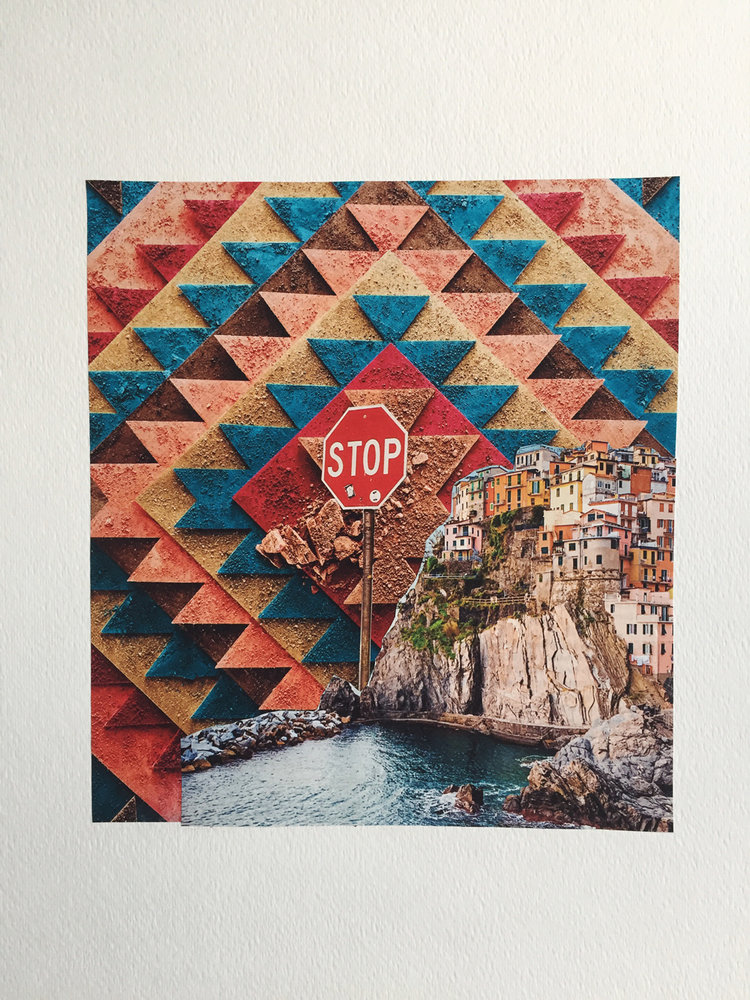
Have you made any work directly related to your life as a mother? The people who know me well look at my work and see things that I don’t necessarily see. They see these maternal images or shapes. But no, I have not been explicit about the motherhood thing, and I will tell you why:
One, because it is very traumatic for me. There are a lot of things that I need to unpack. I’m working on a memoir about my experience and it’s still very sore. I’m courageous in a lot of ways, and I’m like an open book in a lot of ways, but when it comes to my daughter, our relationship and our experience, I’m pretty protective over that space. I want to protect her privacy, and there are a lot of things that I just haven’t dealt with or reckoned with.
“I’m courageous in a lot of ways, and I’m like an open book in a lot of ways, but when it comes to my daughter, our relationship and our experience, I’m pretty protective over that space.”
I do keep some of the artwork that I make private, and I realize that the fact that I haven’t done anything explicit about motherhood is telling. It’s one of those things where I think I want to go there, but I don’t know if I have the energy to go there. I think eventually I will have to work on some sort of self portrait type project, but I know what that would require me to think about myself and everything that I’ve been through, and I don’t know if I want to do that just yet.
I want to thank you for being honest about your experience, and for saying out loud that that was a traumatic experience. I think that’s important to put out there. You’re definitely not the only one. It was very, very challenging, and very, very hard. And I had to go through a lot of therapy just to get through some of the early adult years. And I probably still need to get back into therapy. No, I haven’t done anything explicit about motherhood. But you got me thinking, so thank you.
When your daughter was really small, did you consider yourself an artist? I did not consider myself an artist. I’ve always considered myself a creative person, but not an artist, not when she was younger. I thought of myself as an intellectual, book smart with a specific trajectory, a hard worker. Those were the things I prided myself on.
There are moments I look back on when I was in college and around art and art making, and I wonder where I would have been if I had been still enough and listened to some of the things that were pulling me. What if I had taken another art history class, or not dropped out of that creative writing class. It’s those little things, when you get little signs and realize, “Oh, God is trying to tell you something but you’re not listening.”
But out of fear of not having enough, I followed this route. I do love science, so it’s not like I was forcing it. But when I did start making art it was because it was therapy for me. My daughter had a hard time in her teenage years, so I would make art to calm myself down and try to help support her in her own growing.
What was it like going to college when you had a small child to take care of? My daughter lived with me in the dorms, which is not allowed. My first year at Columbia, I lived maybe two or three train stops away from Columbia, and I would wake up every morning at five a.m., get her ready for school, and take her back to a school that was just a few blocks from Columbia. It got to be too much, and I needed to figure something out.
At the same time, I thought since I’m going to this fancy college, maybe we could get my daughter into a fancy school, and maybe she’ll get a scholarship. I didn’t have any money, but I applied for her to go to all these private schools in the city. We ended up getting interviews at a bunch of schools, and she ended up going to this all girls private school on the upper east side called the Brearley School for Girls, on scholarship. The problem was that the school bus didn’t go up into Harlem where we lived, but the school bus would stop right in front of my dorm building—another reason to have her there. My second year, my roommate was my best friend, and we actually won the lottery to get this really nice apartment, which never happens. We had this one bedroom apartment, with all this space, so I set my daughter up there.
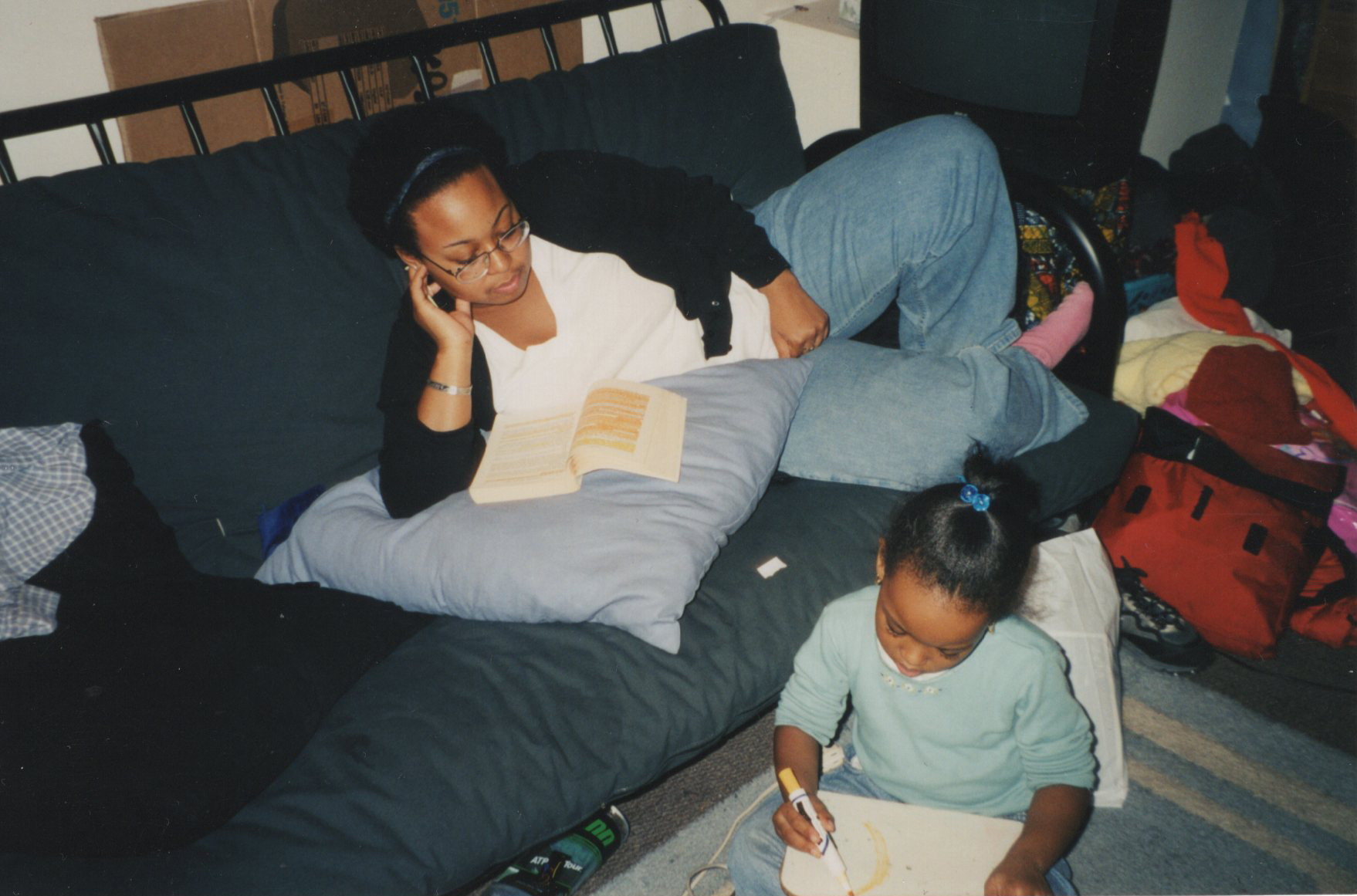
The next year we were back in the dorms, and I snuck her into my dorm. The next thing I knew all the security guards were in cahoots with me. They saw her every day and they knew she lived there. They would bring her snacks. Whenever I had to go to class I would take her with me if she wasn’t in school. If I had to run to the library and it was late at night, my dorm supervisor would watch her. It was great. And the bus picked her up, right there. That’s where she grew up from age three to seven.
And then when we graduated, I told her, “You should graduate, too!” She walked across the stage with me and shook the president’s hand. Everybody went crazy clapping for Nikierra, because they all knew who she was. I felt bad for the person behind me because everyone was cheering so loud you couldn’t even hear their name being called. Their parents are there and they can’t hear their kid’s name because everyone’s shouting for Nikierra! She made a lot of friends.
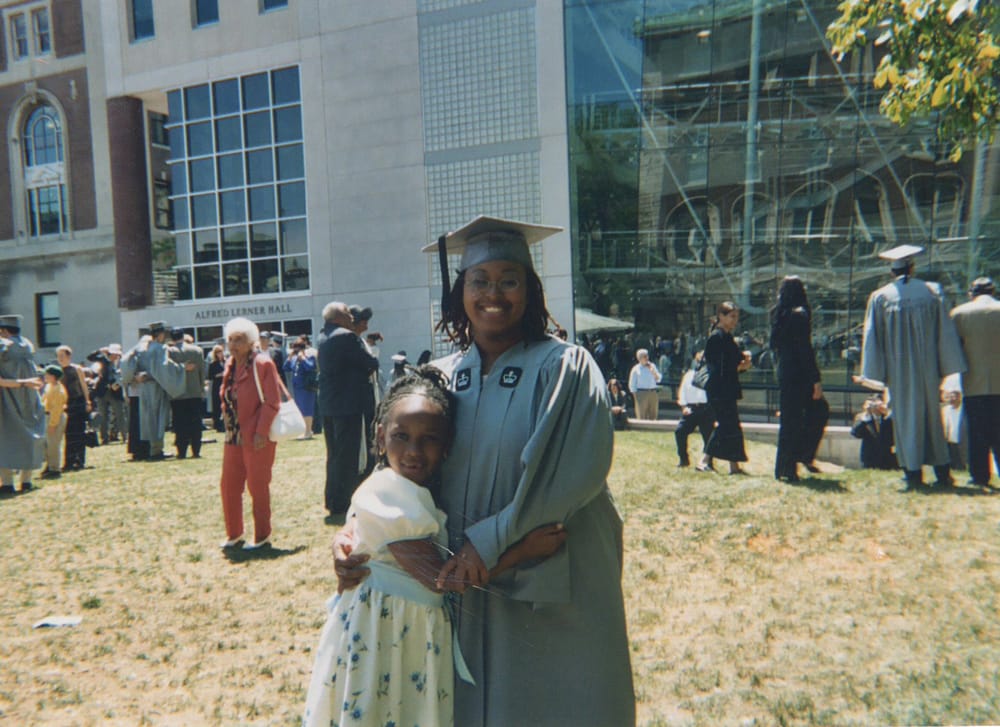
Do you have any advice for other Mother Makers? I think it’s really important for Mother Makers, for all makers, to not stop doing your thing. It’s totally okay if, when you have small kids at home, you can’t just go off for four hours and make art in a studio. But my guess is that you can find 20 minutes.
Be okay with the fact that one, your art practice is never going to look like anyone else’s, so just deal with that. And two, you have a responsibility to keep doing your thing, whatever your thing is. Three, if it means something to you, find a way. Just find a way. Because the minute you shut it down completely, there will be repercussions. You won’t be as happy as you could be, or as creative as you could be, or fulfilled as you could be. I would encourage people to find the time, whatever the time is, and be okay with your practice being your practice. A mom with five kids can have a very different practice than a mom with one kid, and that’s okay.
“Artists are truth tellers. Artists are brave. We say things that aren’t convenient. And you could be raising little artists, which is a good thing, because we need more of us!”
I also think sharing your art with your kids is important. You just have to figure out different ways to do your thing and still be a good mother. Share it with them. I often imagine what it would have been like if I had had a creative parent. If you share your art with your kids, you just open up a whole line of possible careers that aren’t doctor, lawyer or accountant. We need those things too, but the the more you’re doing your thing, the more your kids are seeing you just live.
My daughter can think about things like being a travel blogger, because she’s seen me blogging since 2006! You open up possibilities for your kids when you’re living in your full potential. They need to see that. Invite them in, explain to them how important it is to you.
Artists are truth tellers. Artists are brave. We say things that aren’t convenient. And you could be raising little artists, which is a good thing, because we need more of us!
